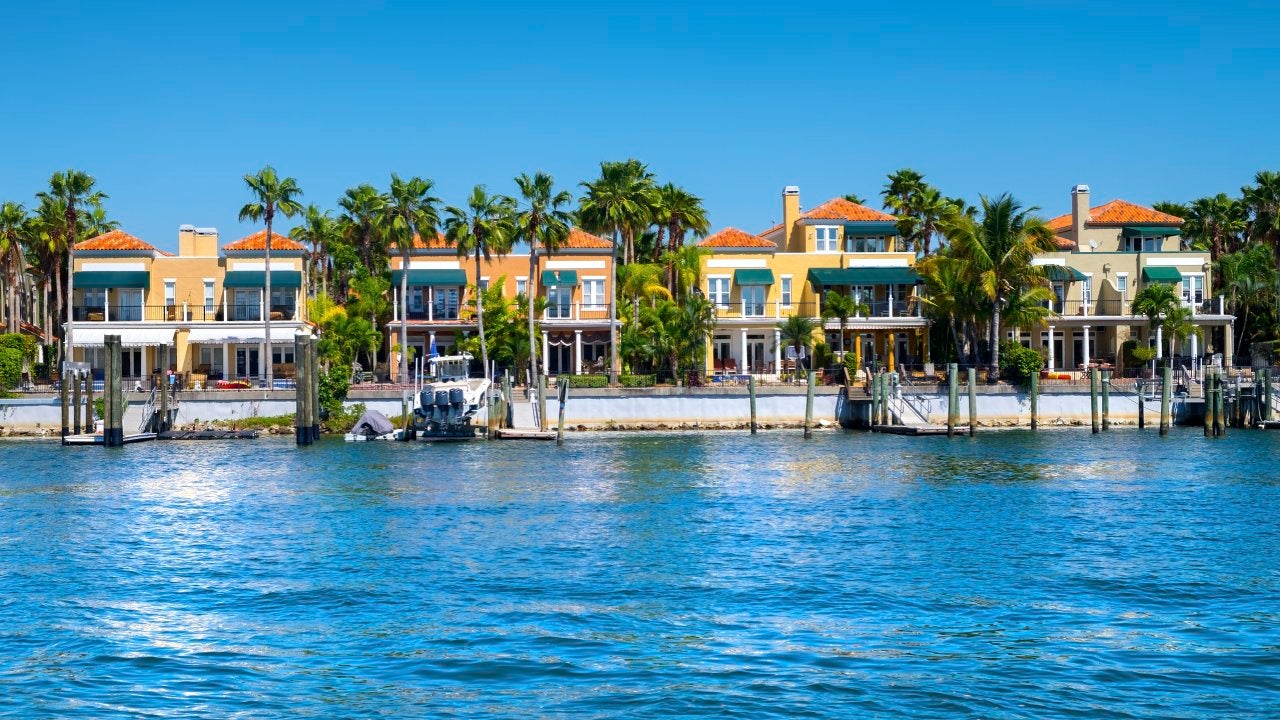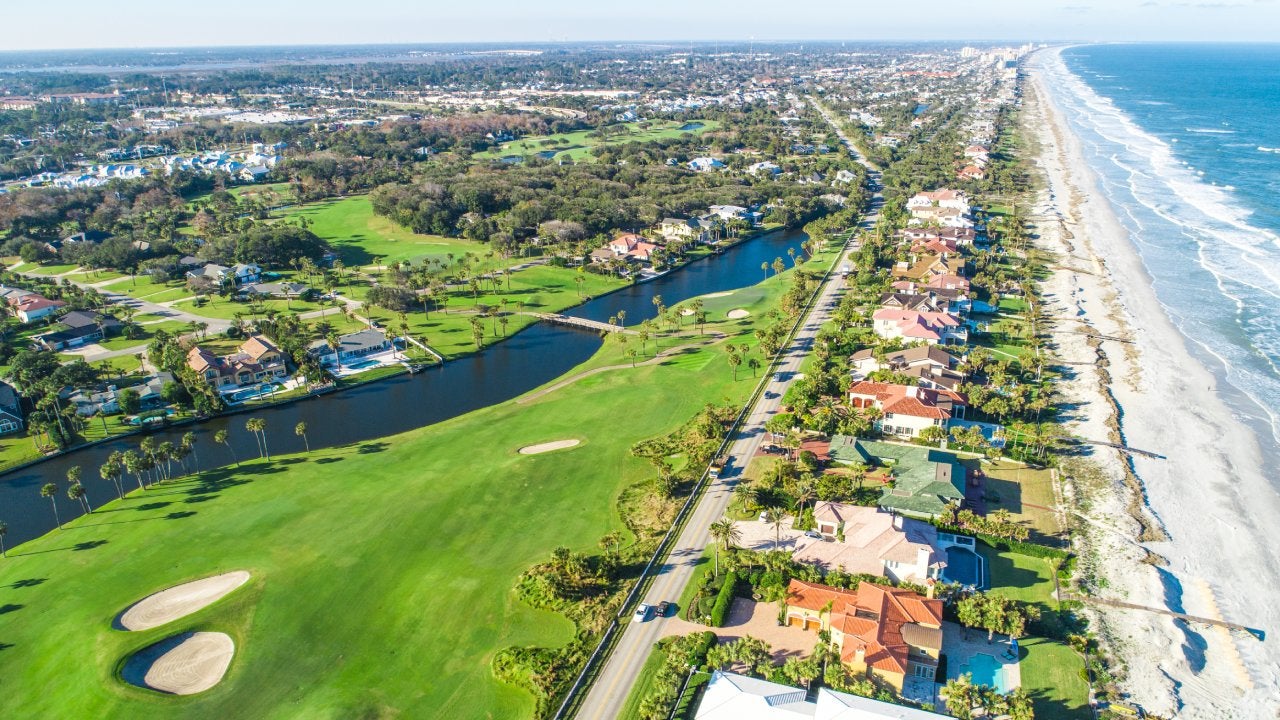Buying a house in Miami: A how-to

There are plenty of reasons to settle down in Miami: beautiful beaches, cosmopolitan creative energy, never-go-to-sleep nightlife and a thriving food scene, to name a few. However, if you’re thinking about buying a house in Miami, you need a lot of money. According to RealtyHop’s analysis of housing markets around the country, Miami is the least affordable place in the U.S.
And a key reason for that is its housing costs. Of the 20 cities surveyed in CoreLogic’s latest Case-Shiller U.S. National Home Price NSA Index, Miami reported the highest year-over-year gains in home price tags — a 24.6 percent increase, to be exact.
However, there are cheap (or at least, not hyper-pricey) options in the metro area, and the headlines about Miami can be a bit skewed by the eye-popping price tags of the waterfront mega-mansions. If you’re looking for a reasonable place to plant roots in south Florida, read on for everything you need to know about buying a house in Miami.
Why buy a house in Miami
While buying a house in Miami is expensive, you’ll pay a bit less for everything else compared with other cities. Bankrate’s cost of living calculator shows that the total cost of living here is 31 percent lower than it is in Manhattan and 37 percent lower than it is in Los Angeles. Plus, buying a house in Florida means not worrying about paying a state income tax.
Additionally, Miami real estate has a proven track record of delivering value for anyone who can afford property here. According to figures from the Miami Realtors Association, prices have increased in the area for nearly 11 years in a row. With the future being driven by flexible work, it’s clear that Miami will continue to attract newcomers — so if you ever decide you’re ready to leave, you should be able to find plenty of interested buyers or renters.
Find a Miami home for your budget
The median sales price of a single-family home in Miami-Dade County climbed to $575,000 in October of 2022. While that’s a steep sum — the national median is around $455,000 — it’s important to understand that the high-priced estates in places like Coral Gables, Coconut Grove and Star Island play a major role in fueling the market. As you do the math to determine how much house you can afford with current mortgage rates, you’ll find plenty of more affordable parts of the area. You might not be parking a yacht on the water in front of your mansion, but it’s worth exploring suburbs like Hollywood and Hallandale Beach to find more moderately-priced properties.
Is now a good time to buy a house in Miami?
It’s still a seller’s market here, so it’s a tough time to buy a house in Miami. However, there are two key positive trendlines for buyers. First, buyers are paying 96 percent of the original list price of a single-family home — nearly 3 percent less than they were paying in October of 2021. Second, those homes are sitting on the market for 30 days — an eight-day jump from a year ago.
Looking ahead to 2023, the housing market seems likely to continue to slow down. So, if you can stomach payments from high mortgage rates, you may be able to find a better deal in Miami.
One important piece of information to keep in mind: Climate change will not be kind to coastal areas like southern Florida’s. By 2040, sea levels in the area are estimated to be between 10 and 17 inches higher than they were in 2000. While those storm clouds haven’t done anything to dampen the current market in Miami, it’s essential to think about your long-term plans and whether your property value may decrease — or at least, whether you’ll have to invest in some major disaster insurance.
Things to know about buying a house in Miami
How safe are the neighborhoods where you’re looking?
Miami earns a D from CrimeGrade due to the fact that a crime occurs every minute in the metro area — not exactly a comforting piece of news if you’re looking to live here. However, safety shares a key commonality with real estate: location, location, location. One neighborhood can look completely different from another just three miles away. Make sure you investigate each neighborhood to get a sense of how safe you’ll feel in your new home.
How long will your commute be?
Living in Miami can mean spending a lot of time in your car. If you aren’t enjoying the ability to work from home, the average one-way commute time here is more than 32 minutes, according to data from the Census Bureau. However, transportation options in the area are diversifying. The high-speed Brightline train is a convenient connection between Miami, Aventura and Fort Lauderdale that can allow you to keep your car parked.
How much will you pay in closing costs?
In addition to saving for a down payment on a new place in Miami, you’ll need to consider how much closing costs will add to your bill. Florida has the eighth-highest average closing costs in the country, so these aren’t cheap. With closing costs typically amounting to 2.3 percent of the purchase price in Florida, that adds up to $13,225 on a typical $575,000 property here. The good news: The seller may cover a portion of these costs, although buyers are generally responsible for title insurance in Miami — unlike most of the other markets in Florida. You may be able to negotiate to get them to cover more expenses such as the transfer tax.
How much will you pay in property taxes?
Your property taxes will vary based on where you buy, and you’ll need to consider a number of different taxing authorities. The local government has a helpful tax estimation tool to get a sense of what you’ll pay in different parts of the area. For example, the annual property tax bill on a $500,000 property in Bal Harbour without a homestead exemption would be just over $7,733 while a property with the same value and a homestead exemption of more than $9,940.
What else will you need to pay for as a homeowner?
The beautiful oceanfront views in Miami come with one obvious drawback: Serious flooding concerns. Between existing concerns about hurricanes and rising sea levels, you’re likely going to want to purchase flood insurance for your property, which can add a significant chunk of money to your home ownership costs.
Tips for buying a house in Miami
Save for a down payment
The average down payment on a home in Florida was $50,000 in the spring of 2022, which can feel overwhelming for a lot of buyers on a tight budget. However, you can likely pay a lot less. If you have excellent credit and qualify for a conventional loan, you can typically put down just 3 percent, although you’ll need to pay mortgage insurance premiums until you accumulate 20 percent equity in the property. On a $575,000 property, a 3 percent down payment comes out to $17,250.
There are options for down payment assistance, too. For example, Florida Housing offers a zero-interest second mortgage that offers up to $7,500 ($10,000 of assistance for FHA and VA borrowers), and payments are deferred until you sell the home or refinance the mortgage. If it’s your first time purchasing a home and you qualify as a low- or moderate-income borrower, consider the Miami-Dade Economic Advisory Trust (MDEAT) Home Ownership Assistance program. You may be able to borrow up to $12,250 in funds to cover a down payment and closing costs. Plus, if you live in the home for 10 years without refinancing your mortgage, the loan will be completely forgiven.
Find a local Miami real estate agent
Miami is a very competitive housing market (more on that below), so a real estate agent is an essential resource. Realtors have a better sense of the ups and downs in the market, and they can point you toward neighborhoods where you can find the kind of home you’re looking for at a price point that meets your budget restrictions.
Get preapproved for a mortgage
Before you start searching for a home, you need to get preapproved for a mortgage. Any seller will need to see your preapproval letter to take your offer seriously. It doesn’t take much to get preapproved: In fact, some lenders will be able to process your preliminary application with an automated system that spits out a preapproval in less than an hour. And even after you get preapproved by one lender, you should still consider offers from other lenders in Florida to make sure you’re getting a combination of low rates and low fees. You may also want to consider cash-backed buying programs that can help you compete with all-cash bids.
Understand the playing field
As you begin house hunting in the Miami area, it’s important to note that you’re going to have plenty of competitors, many of whom won’t even need to borrow money to submit an offer. Data from the Miami Realtors Association shows that 38 percent of deals here are all-cash. A lot of buyers aren’t based in the U.S., either: Miami is the number-one destination for global homebuyers.
However, the housing market is cooling off, and there is some good news if you’re trying to buy here. Inventory levels of single-family homes in Miami increased to 3.7 months of supply — still a seller’s market, but better than the limited inventory during the peak of the pandemic. Plus, Redfin data shows that fewer homes are selling for more than their list price, and more sellers are dropping their prices to attract buyers.
Bottom line on buying a house in Miami
Whether you’re one of the many people trying to buy a house in Miami from out of state or you’re a renter ready to plant permanent roots, 2023 will be a better time to be on the buying side of the table here. While higher mortgage rates aren’t great for your budget, the shift in the market is helping bring price increases back down to sea level. Use Bankrate’s mortgage calculator to estimate your monthly payments to make sure you won’t stretch your finances and become house poor. After all, you’ll want to have plenty of cash left over to play in the south Florida sunshine.
You may also like

‘We buy houses’ companies in San Diego

How to sell my house fast in Maryland

Florida housing market: Everything you need to know

Buying a house in Jacksonville, FL


